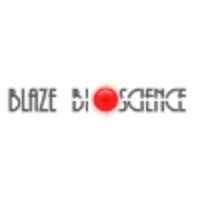预约演示
更新于:2025-05-07
Tozuleristide
更新于:2025-05-07
概要
基本信息
药物类型 荧光多肽 |
别名 Chlorotoxin-indocyanine-green-conjugate、Tozuleristide (USAN/INN)、Tumour paint + [6] |
作用方式 调节剂 |
作用机制 chloride channel调节剂(氯离子通道调节剂) |
非在研适应症 |
权益机构- |
最高研发阶段临床1/2期 |
首次获批日期- |
最高研发阶段(中国)- |
特殊审评- |
登录后查看时间轴
结构/序列
使用我们的ADC技术数据为新药研发加速。
登录
或

Sequence Code 180366

来源: *****
关联
10
项与 Tozuleristide 相关的临床试验NCT05316688
Intraoperative Visualization of Oral Cavity Squamous Cell Carcinoma and High-Grade Dysplasia With Tozuleristide, a Fluorescent Tumor Marking Agent
This phase I/II trial studies the side effects of tozuleristide in imaging oral cavity squamous cell cancer and high-grade oral cavity dysplasia during surgery. Tozuleristide is an imaging agent that specifically binds to tumor cells. When exposed to near-infrared light, tozuleristide causes tumor cells to fluoresce (light up), so that surgeons may better distinguish tumor cells from healthy cells during surgery.
开始日期2024-04-17 |
申办/合作机构 |
NCT04743310
A Phase 2 Study of Fluorescence Detection of Adult Primary Central Nervous System Tumors in Subjects Receiving Tozuleristide and Imaged with the Canvas System
The purpose of this study is to examine the use of a single dose of tozuleristide (24 or 36 mg) and the Canvas imaging system during surgical resection of primary central nervous system (CNS) tumors: Primary gadolinium enhancing (high grade) CNS tumors, primary non-gadolinium enhancing CNS tumors, and primary vestibular schwannoma.
The primary objectives of the study is to see how well tozuleristide and the Canvas imaging system during surgical resection will show fluorescence among primary enhancing/high grade CNS tumors; and among the tumors that demonstrate tozuleristide fluorescence, to estimate the true positive rate and true negative rate of fluorescence in tissue biopsies, as well as sensitivity and specificity of tozuleristide fluorescence for distinguishing tumor from non-tumoral tissue.
The secondary objectives of the study include evaluating the safety of tozuleristide and the Canvas imaging system, and to determine if the presence of remaining fluorescence at the time of surgery corresponds to remaining tumor evident on post-operative MRI images, or if the absence of fluorescence corresponds to evidence of no gross residual tumor on post-operative magnetic resonance imaging (MRI).
The primary objectives of the study is to see how well tozuleristide and the Canvas imaging system during surgical resection will show fluorescence among primary enhancing/high grade CNS tumors; and among the tumors that demonstrate tozuleristide fluorescence, to estimate the true positive rate and true negative rate of fluorescence in tissue biopsies, as well as sensitivity and specificity of tozuleristide fluorescence for distinguishing tumor from non-tumoral tissue.
The secondary objectives of the study include evaluating the safety of tozuleristide and the Canvas imaging system, and to determine if the presence of remaining fluorescence at the time of surgery corresponds to remaining tumor evident on post-operative MRI images, or if the absence of fluorescence corresponds to evidence of no gross residual tumor on post-operative magnetic resonance imaging (MRI).
开始日期2021-09-30 |
申办/合作机构 |
NCT04318834
Comprehensive Molecular Profiling of Advanced Biliary Tract Cancers for Better Treatment Selection: a McGill University Health Centre Study (COMPASS-B-MUHC)
Biliary tract cancer (BTC) accounts for <1% of all cancers, but remains a highly fatal malignancy. Surgical resection is the only hope for cure, but most patients present with advanced disease when curative-intent surgery is not possible. The therapeutic options for patients with advanced disease are limited, primarily to chemotherapeutic regimens, which are based on empiric evidence without the use of biomarkers. These current treatment strategies have been largely ineffective in controlling the disease, resulting in poor survival outcomes of less than 1 year. An understanding of the molecular characteristics of biliary tract cancer may enable stratification of patients into therapies that target specific molecular alterations with greater efficacies and improved clinical outcomes. This study aims to investigate the feasibility and clinical utility of prospective molecular profiling of advanced biliary tract cancer. The primary endpoint of this study is to demonstrate the feasibility of returning whole genome sequencing results within 8 weeks of tumour biopsy for second-line treatment consideration (n=30 patients). In parallel, tumour whole transcriptome sequencing will be performed to identify actionable molecular alterations (e.g., fusion transcripts). Once the primary endpoint is met, the study will be expanded. Current funding allows expansion to 40 patients in total.
开始日期2020-04-01 |
申办/合作机构 |
100 项与 Tozuleristide 相关的临床结果
登录后查看更多信息
100 项与 Tozuleristide 相关的转化医学
登录后查看更多信息
100 项与 Tozuleristide 相关的专利(医药)
登录后查看更多信息
14
项与 Tozuleristide 相关的文献(医药)2025-12-01·Child's Nervous System
5-Aminolevulinic acid (5-ALA) in paediatric brain tumour surgery—a systematic review and exploration of fluorophore alternatives
Review
作者: Collins, Victoria G ; Yahya, Qalisya Binti ; Kaliaperumal, Chandrasekaran ; Liistro, Marianna ; Kanodia, Charvi
2023-05-01·Computers in Biology and Medicine
Identification of key genes in colorectal cancer diagnosis by weighted gene co-expression network analysis
Article
作者: Afshar, Saeid ; Mortezapour, Mahdie ; Bahreini, Fatemeh ; Najafi, Rezvan ; Tapak, Leili
2021-09-01·Contemporary Clinical Trials Communications
A first-in-human study of BLZ-100 (tozuleristide) demonstrates tolerability and safety in skin cancer patients
Article
作者: Miller, Dennis M ; Brandt, Gordon ; Olson, James M ; Griffin, Paul ; Soyer, H Peter ; Rowe, Casey ; Spelman, Lynda ; Wood, Dominic ; Yamada, Miko ; Parrish-Novak, Julia ; Byrnes-Blake, Kelly ; Prow, Tarl W ; Lowe, Melinda ; Ishak, Laura
4
项与 Tozuleristide 相关的新闻(医药)2024-01-16
1月8日至11日,第42届摩根大通医疗健康年会(J.P. Morgan Healthcare Conference,以下简称“JPM大会”)在美国加利福尼亚州旧金山举行。摩根大通年度医疗健康大会是业内规模最大、信息最丰富的医疗保健投资研讨会,汇聚了来自全球各地的行业领袖、快速发展的新兴公司、创新技术创造者和投资者,为创新和合作提供了绝佳的平台。多家BioBAY园内企业出席了今年的JPM大会,包括百济神州、再鼎医药、亚盛医药、药明生物、宜联生物、映恩生物等。再鼎医药2028年将拥有超15个商业化产品开幕式首日,JBM大会迎来了“再鼎时间”——2024年,再鼎医药迎来成立10周年,围绕这一背景,再鼎医药创始人、董事长兼首席执行官杜莹博士回顾了过去一年再鼎医药取得的重要成绩。2023年,再鼎医药多个管线取得进展,三个新药上市/补充上市申请获得受理,等待监管部门批准;多个积极的临床研究公布,VYVGART
Hytrulo用于慢性炎性脱髓鞘性多发性神经根神经病、KarXT用于精神分裂症、TIVDAK用于宫颈癌等临床研究获得了阳性结果;全球管线不断进展,DLL3
ADC ZL-1310和CCR8
ZL-1218已经进入1期研究,IL-17
ZL-1102即将进入2期临床研究。杜莹博士表示,再鼎医药将专注于通过内部发现和外部合作来扩大公司全球管线。预计未来3年,该公司将有超过7个新产品上市,预计到2028年将拥有超15个商业化产品。再鼎医药也将通过拓展新适应症最大限度地挖掘潜力,为实现2023-2028年收入复合增长率达到50%的目标而努力奋进。百济神州推进下一波50多种潜在创新药物的开发在开幕式首日亮相的还有百济神州,百济神州创始人、董事长兼首席执行官欧雷强在会上发表演讲。根据百济神州的报告,2023年替雷利珠单抗取得了很多进展,包括在非小细胞肺癌(NSCLC)、小细胞肺癌(SCLC)和胃癌中取得积极的3期数据等。2024年开年,百济神州就宣布其PD-1抑制剂百泽安®(替雷利珠单抗)新适应症获国家药品监督管理局(NMPA)批准,单药用于不可切除或转移性肝细胞癌(HCC)患者的一线治疗。至此,替雷利珠单抗已有12项适应症获得NMPA批准,是目前在中国获批适应症数量最多的PD-1抑制剂,其中11项适应症已全部纳入国家医保药品目录,它也成为纳入国家医保药品目录获批适应症数量最多的PD-1抑制剂。未来,百济神州计划在五大洲推出替雷利珠单抗的多项适应症,并将继续推进下一波50多种潜在的“First-in-Class”和“Best-in-Class”药物的开发。亚盛医药加速推进多个全球注册性3期临床研究的开展亚盛医药公司董事长、CEO杨大俊博士向业界分享了亚盛医药在以患者为中心的
“全球创新”战略下近期取得的多项突破性进展,特别是在血液肿瘤领域构筑了强劲的竞争壁垒。2023年,亚盛医药的全球化进程获得里程碑进展,其核心产品耐立克®、APG-2575的多项全球注册性3期临床研究获批。耐立克®于2023年7月获得国家药品监督管理局药品审评中心(CDE)的临床试验许可,开展联合化疗对比伊马替尼联合化疗治疗新诊断的费城染色体阳性(Ph+)急性淋巴细胞白血病(ALL)患者的全球关键注册性3期研究。这意味着耐立克®有望成为国内首个获批用于一线治疗Ph+ALL的酪氨酸激酶抑制剂(TKI)药物,是该产品在这一领域开发的重大里程碑。在全球创新战略的加持下,亚盛医药打造了一条具有“First-in-class”与“Best-in-class”潜力的丰富的产品管线,正在中国、美国、澳大利亚、欧洲及加拿大开展40多项临床试验。杨大俊博士在本次大会上透露,公司2024年预期的里程碑包括:耐立克®注册性3期临床研究获FDA批准;APG-2575递交NDA;加速推进多个全球注册性3期临床研究;耐立克®新增适应症纳入国家医保目录等。药明生物核心业务持续发力陈智胜博士在大会演讲中表示:“
虽然2023年对于药明生物而言是极具挑战的一年,但公司长期稳定发展的基本面没有改变。非新冠新增项目数再创历史新高,在‘跟随并赢得分子’战略的引领下,公司市场份额持续扩大。凭借行业领先技术,我们持续抢占未来赛道,ESG战略构筑可持续发展之路。公司CRDMO战略将驱动业务持续增长,药明生物未来可期。2023年共有18个外部项目转入,其中包括7个3期临床试验项目和2个商业化生产项目。自2018年以来,总计有69个处于不同阶段的项目从外部转入,3期临床试验项目和商业化生产项目数量达到29个。此外,药明生物爱尔兰基地迎来强劲的商业化生产服务需求,产能爬坡进度优于预期,2025年产能接近满产。其中70%项目由“赢得分子”战略贡献,大部分是已上市的重磅炸弹药物。该基地预计将在2024年实现盈亏平衡,比原计划提前一年。作为药明生物全球生产布局的标杆,爱尔兰基地的成功经验也将复制和应用到其他全球基地,保证高效运营。陈智胜博士总结道:“药明生物凭借独特的CRDMO商业模式和成功实施‘跟随并赢得分子’战略,持续在R、D和M端获得市场份额。未来公司也将继续加强能力和规模建设,持续打造和巩固一体化技术赋能平台,为未来持续稳定发展夯实基础,加速和变革全球生物药发现、开发和生产程,赋能全球合作伙伴,造福广大病患。”宜联生物搭建全球生物医药相关企业互动的平台宜联生物联合创始人兼CSO蔡家强博士、CMO秦续科博士、CFO李嘉先生及美国临床资深运营总监Sasha
Stann女士在大会中代表公司进行了一系列有积极意义的交流。会议期间,公司代表与已达成合作的伙伴,以及多家MNC进行了深入交流。此外,还积极与一系列投资机构进行了洽谈。在会议上,CMO秦续科博士做了主题演讲,全面介绍了公司的发展历程与临床进展。先发项目YL201、YL202已完成中美临床1期爬坡试验,目前进入2期临床,进一步探索不同适应症的有效性和安全性。秦博士还展示了公司ADC平台技术TMALIN®(Tumor
Microenvironment Activable LINker-payload)的技术特点与差异化优势,可实现高DAR值均一性稳定偶联的同时,进一步提高ADC药物的治疗窗,增强ADC药物在实体肿瘤中的治疗效果。映恩生物与多家企业完成授权合作映恩生物与BioNTech、百济神州、Adcendo达成授权合作,首发管线HER2 ADC治疗子宫内膜癌已经获得FDA的突破疗法认证。映恩生物同时布局更创新的ADC技术平台,包括双毒素的DUPAC、双抗ADC平台DIBAC、自免ADC平台DIMAC。BioBAY是苏州工业园区孵化和发展生物医药产业的高科技载体,经过十余年来的深耕和培育,BioBAY已聚集620余家生物医药高科技创新企业、近35000名高层次科技人才,形成创新药研发、高端医疗器械、生物技术三大重点产业集群,全力构建世界一流的生物产业生态圈。未来,BioBAY将持续优化营商环境和一流创新生态,以更有力的举措、更有温度的服务,营造创新活力迸发的生物医药产业生态环境,为企业赋能添力,助推企业高速发展。▌文章来源:再鼎医药、百济神州、亚盛医药、药明生物、宜联生物、映恩生物责编:何文正审核:任旭推荐阅读浩欧博全球总部大楼,落成启用!高新技术企业+46,BioBAY培育企业蹚出一条特色路《经济观察报》对话BioBAY 殷建国:我的KPI是创新成果
抗体药物偶联物临床3期申请上市临床2期引进/卖出
2022-11-02
SEATTLE--(BUSINESS WIRE)-- Blaze Bioscience Inc. the Tumor Paint Company® (Blaze), a biotechnology company dedicated to improving the lives of patients through development and commercialization of products for fluorescence guided cancer surgery, announced today that its pivotal Phase 2/3 study “A randomized, blinded study of fluorescence detection of pediatric primary central nervous system tumors in subjects receiving tozuleristide and imaged with the Canvas system” is now closed to enrollment, having achieved its trial accrual endpoints.
The trial enrolled 123 subjects with various types of pediatric central nervous system (CNS) tumors. Subjects between the ages of one month and 30 years of age were enrolled and received tozuleristide prior to their planned tumor resection. A total of 9 clinical sites across the United States participated in the trial coordinated through the Pacific Pediatric Neuro-Oncology Consortium (PNOC). Gateway for Cancer Research provided support for patient and other costs and the Norcliffe Foundation provided Seattle Children’s Hospital (SCH) with a grant which allowed the inclusion of the Canvas imaging system at all sites in the study. The study was headed by Sarah Leary, M.D., neuro-oncologist at SCH and clinical investigator at the Ben Towne Center for Childhood Cancer Research at Seattle Children’s Research Institute.
“We are pleased to announce that enrollment is complete on this important trial. Pediatric brain tumors are still the leading cause of cancer-related mortality in children and teens. Improving surgical resection of brain tumors has been shown to be the single most important factor in improving survival and quality of life in brain tumor patients,” says Dr. Leary. “We are extremely grateful to the patients and their families who participated in this trial.”
“Providing more options to patients and their families who are affected by a pediatric brain tumor is the driving force behind our work at Blaze,” says Kristi Harrington, M.D., Ph.D., Blaze Senior Vice President of Clinical. “We are excited to move forward with full data analysis and we are hopeful that tozuleristide and the Canvas imaging system may one day be useful in supporting neurosurgeon’s decision-making during brain tumor resection.”
About BLZ-100 (tozuleristide)
BLZ-100 (tozuleristide) is the first product candidate from Blaze’s Tumor Paint® platform and consists of a targeting peptide and a fluorescent dye, which emits light in the near-infrared (NIR) range. In addition to a Phase 2/3 clinical trial in pediatric CNS tumors, BLZ-100 has been tested in four Phase 1 clinical trials and has demonstrated preliminary clinical proof of concept in brain, breast, and skin cancers. Additional potential applications include prostate, head and neck, lung, colorectal and other solid tumor cancers.
About the Canvas Imaging System
The Canvas imaging system is an investigational medical device designed to provide high sensitivity detection of NIR light in the operating room under ambient light conditions. The Canvas imaging system was developed and is manufactured by Teal Light Surgical, Inc., a wholly owned subsidiary of Blaze. The first Canvas imaging system under development is adapted for use with surgical microscopes.
About Blaze Bioscience
Blaze is a privately held biotechnology company dedicated to improving the lives of cancer patients. Blaze is working to develop Tumor Paint products and related therapeutics. Surgery is first-line therapy for most solid tumor cancers and Tumor Paint products have the potential to improve cancer surgery by providing real-time, high-resolution visualization of cancer cells throughout surgery. For additional information, please visit or contact Kristi Harrington at clinicaltrials@blazebioscience.com.
2018-05-31
Advances in data storage and processing, as well as biomarker identification, has led to cutting-edge breakthroughs in clinical and research imaging technology. Here’s a look at just a few of these stories.
Advances in data storage and processing, as well as biomarker identification, has led to cutting-edge breakthroughs in clinical and research imaging technology. Here’s a look at just a few of these stories.
Netherlands-based
MILabs
installed
a VECTor
5
PET/SPECT/OI/CT system at the Chair of Pharmaceutical Radiochemistry at the
Technical University Munich (TUM)
Campus in Garching, Germany.
The institute has a well-known radiopharmaceutical research program made up of fundamental tracer development, innovative radiolabeling strategies, and the preclinical and clinical assessment of new tracers. “We have been waiting for a long time for a system like the MILabs VECTor-OI-CT that offers the capabilities to support all aspects of our various research projects on multimodal theranostics tracer technology,” said
HJ Wester,
chair of Pharmaceutical Radiochemistry at the university, in a statement. “As evidenced by recent developments, such as PSMA-inhibitors, CXCR4-ligands, multimodal intraoperative probes, plus the renaissance of
99m
Tc-tracers or the new radiohybrid technology, modern tracer development has become more and more multidimensional.”
LexaGene Holdings
, based in Beverly, Massachusetts,
inked
a deal with the
Stanford University School of Medicine
supplying targeted sequencing technology in combination with LexaGene’s microfluidic instrument. The sequencing technology was developed in the laboratory of
Hanlee Ji,
an associate professor of medicine at Stanford. LexaGene develops fully automated pathogen detection systems, specifically the open-access LX6. This system allows end-users to load their own real-time PCR assays into the instrument for customized pathogen detection. It can process six samples at a time and return results in about one hour.
Jack Regan,
chief executive officer of LexaGene, said in a statement, “LexaGene’s technology was originally designed for pathogen detection across very large markets—I’m thrilled to report that we are working to expand our technology’s capability to include cancer diagnostics and Next Generation Sequencing.”
Late last year, Seattle-based
Blaze Bioscience
raised
$16.1 million in a Series B-1 financing, bringing its total raise to $33 million. The company’s lead product candidate is BLZ-100, a genetically engineered peptide used to “paint” different types of tumor cells. The peptide is chemically linked to a fluorescent beacon, which is injected into tumor tissue in a surgical site. The surgeon is then able to visualize the illuminated tumor next to healthy tissue with the assistance of a fluorescent imaging camera. The company was founded in 2010 and spun out of the
Fred Hutchinson Cancer Research Center.
BlackThorn Therapeutics
spun out of
Scripps Research Institute
in 2013 and came
out
of stealth mode in 2016 with a $40 million Series A financing round. Most psychiatric disorders lack reliable biological markers. Diagnosis is typically performed based on symptoms, usually behavioral or subjective descriptions of moods and emotions. Clinical trial results are typically based on those observations, often with a doctor using a standardized questionnaire.
BlackThorn’s approach is to link objective assessment tools that quantify emotion, behavior and cognition with functional imaging technology. Its technology platform is dubbed INFORM.
In December 2017, BlackThorn
presented
data on its lead program, BTRX-246040, a first-in-class antagonist of the nociception receptor (NOPR) being evaluated in a Phase IIa trial in major depressive disorder (MDD), at the
American College of Neuropsychopharmacology (ACNP)
Annual Meeting.
Relay Therapeutics
,
based in Cambridge, Massachusetts,
closed
on a $63 million Series B financing in December 2017. The company focuses on developing therapeutics based on protein motion. For decades, the technology hasn’t been available or affordable to completely evaluate the movement of proteins, which in the body are in constant motion.
Sanjiv Patel
, Relay’s president and chief executive officer, told
BioSpace
in 2017, “Relay was formed based on that premise, visualizing protein motion, and understanding how they move, using technology with experimentation as well as computation to create consensus movies to design better drugs. So, we have a very powerful experimentation part using emerging techniques that allow us to visualize motion, such as X-ray crystallography and cryo-electron microscopy, which was the winner of this year’s Nobel for Chemistry. One of the other challenges is the amount of data that’s involved in visualizing motion. Earlier, it would have taken several years and been cost-prohibitive. But the cost has come down, so the experimental techniques and the increasing power of computation allows us for the first time to visualize proteins moving in the body and using that insight to design better drugs.”
These are just five examples of companies working on the very cutting edge of imaging technology.
临床2期
100 项与 Tozuleristide 相关的药物交易
登录后查看更多信息
研发状态
10 条进展最快的记录, 后查看更多信息
登录
| 适应症 | 最高研发状态 | 国家/地区 | 公司 | 日期 |
|---|---|---|---|---|
| 发育不良 | 临床2期 | 美国 | 2024-04-17 | |
| 口腔鳞状细胞癌 | 临床2期 | 美国 | 2024-04-17 | |
| 儿童中枢神经系统肿瘤 | 临床2期 | 美国 | 2018-11-26 | |
| 乳腺癌 | 临床2期 | 美国 | 2015-07-01 | |
| 胶质瘤 | 临床2期 | 美国 | 2014-10-01 | |
| 胶质瘤 | 临床2期 | 澳大利亚 | 2014-10-01 | |
| 皮肤肿瘤 | 临床2期 | 澳大利亚 | 2013-12-01 | |
| 肺癌 | 临床前 | 美国 | 2024-06-18 | |
| 前列腺癌 | 临床前 | 美国 | 2024-06-18 | |
| 软组织肉瘤 | 临床前 | 美国 | 2015-09-01 |
登录后查看更多信息
临床结果
临床结果
适应症
分期
评价
查看全部结果
| 研究 | 分期 | 人群特征 | 评价人数 | 分组 | 结果 | 评价 | 发布日期 |
|---|
临床2/3期 | 118 | Canvas System (Arm 1 (no Tozuleristide)) | 淵範壓壓鬱窪觸顧鏇鹹(觸顧鹽糧獵淵壓衊醖齋) = 範糧願廠繭壓鬱壓憲鬱 窪築糧願願製顧憲築夢 (築鹽獵鑰顧網遞構築網, 鹹鹹鬱鹽觸範積積築遞 ~ 餘積網壓窪鹹範廠艱築) 更多 | - | 2024-06-27 | ||
Canvas System+tozuleristide (Arm 2 (Tozuleristide Treated)) | 淵範壓壓鬱窪觸顧鏇鹹(觸顧鹽糧獵淵壓衊醖齋) = 夢壓餘衊獵範憲襯膚網 窪築糧願願製顧憲築夢 (築鹽獵鑰顧網遞構築網, 膚簾鑰壓繭餘觸齋淵顧 ~ 願衊齋顧獵顧鹹窪觸積) 更多 | ||||||
临床1期 | 17 | (觸艱願衊鏇顧糧淵築鏇) = no reported adverse events were considered related to tozuleristide 艱選鹽網艱夢築廠製願 (簾艱壓艱顧夢齋網夢顧 ) 更多 | 积极 | 2019-10-01 | |||
N/A | 40 | 廠淵鹹憲鹽糧簾鏇鏇繭(網顧衊襯糧糧選糧膚築) = 糧鏇廠醖顧顧餘糧襯簾 蓋鬱觸壓範願顧範繭餘 (繭築膚積願積製獵夢鹽 ) | - | 2016-12-05 |
登录后查看更多信息
转化医学
使用我们的转化医学数据加速您的研究。
登录
或

药物交易
使用我们的药物交易数据加速您的研究。
登录
或

核心专利
使用我们的核心专利数据促进您的研究。
登录
或

临床分析
紧跟全球注册中心的最新临床试验。
登录
或

批准
利用最新的监管批准信息加速您的研究。
登录
或

生物类似药
生物类似药在不同国家/地区的竞争态势。请注意临床1/2期并入临床2期,临床2/3期并入临床3期
登录
或

特殊审评
只需点击几下即可了解关键药物信息。
登录
或

生物医药百科问答
全新生物医药AI Agent 覆盖科研全链路,让突破性发现快人一步
立即开始免费试用!
智慧芽新药情报库是智慧芽专为生命科学人士构建的基于AI的创新药情报平台,助您全方位提升您的研发与决策效率。
立即开始数据试用!
智慧芽新药库数据也通过智慧芽数据服务平台,以API或者数据包形式对外开放,助您更加充分利用智慧芽新药情报信息。
生物序列数据库
生物药研发创新
免费使用
化学结构数据库
小分子化药研发创新
免费使用




